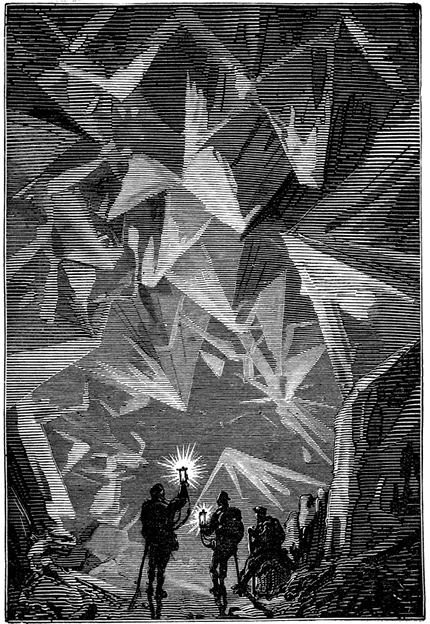1864
(Geo) Science Fiction
Jules Verne (1828–1905)
The pace of scientific discoveries about the Earth and the natural world in general accelerated dramatically in the nineteenth century. Scientists exploring and studying the Earth and its history, like Alexander von Humboldt, Charles Darwin, Charles Lyell, and William Thomson (Lord Kelvin) became the celebrities and pop stars of the time, delivering lectures and writing popular science books for an increasingly scientifically literate general public. It is perhaps not surprising, then, that fiction writers would pick up the mantle of popular science and create memorable stories and characters that paralleled exciting advances in science.
Among the earliest writers to widely popularize the relatively new genre of science fiction was the French author Jules Verne. Verne began his literary career in the 1850s writing popular magazine articles and short fictional pieces focusing on popular topics in the science and technology of the day, and especially on his own personal fascination with geography and exploration. He was particularly inspired by the work of Charles Lyell and other leading geologists of the time, coupled with the relatively new idea that the Earth had gone through numerous cycles of change over vast expanses of time, and that the history of those changes was preserved in the geology of the surface and subsurface. Verne’s characters would descend deep into that subsurface realm, attempting to read the record and follow the clues to reach the elusive core. Verne even seized upon the new idea that perhaps life on Earth was ancient, and in his imagined voyage deep underground his characters encountered numerous examples of prehistoric creatures that readers could imagine may have once dwelled on the surface.
Some of the best science fiction since (and including) Verne is popular, educational, and entertaining precisely because many authors tap into the same new technological advancements and scientific discoveries that are being widely discussed and debated at the same time among cutting-edge scientists and engineers themselves. Indeed, recurrent science fiction themes revolving around archaeology, biology/genetics, polar and deep sea exploration, aviation, robotics, space travel, and many other areas of science and technology often include real science and engineering (or sometimes fanciful extrapolations of them) as an effective “hook” to bring in motivated readers and viewers.
SEE ALSO First World Maps (c. 600 BCE), Native American Creation Stories (c. 1400), Industrial Revolution (c. 1830), Birth of Environmentalism (1845), Natural Selection (1858–1859), The Age of the Earth (1862), Geosynchronous Satellites (1945)
An illustration from Jules Verne’s 1864 science fiction story A Journey to the Center of the Earth.
